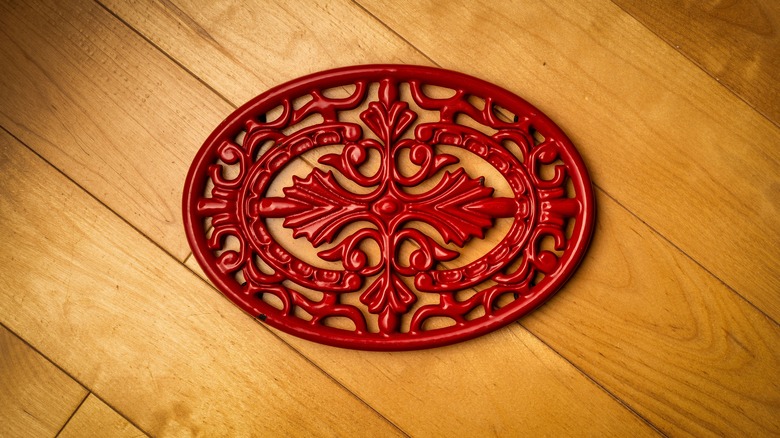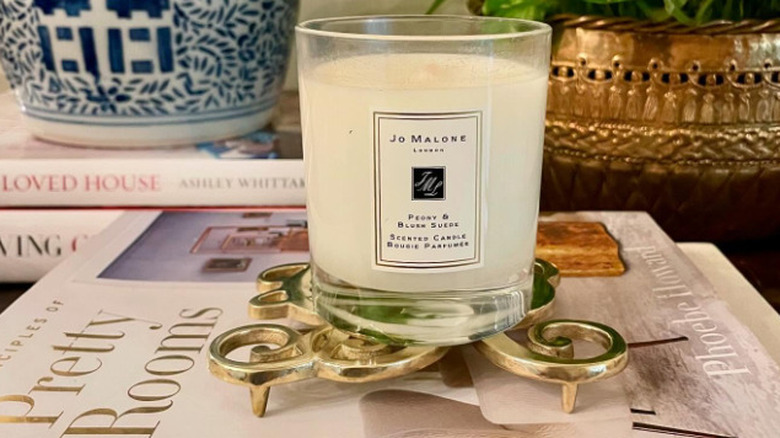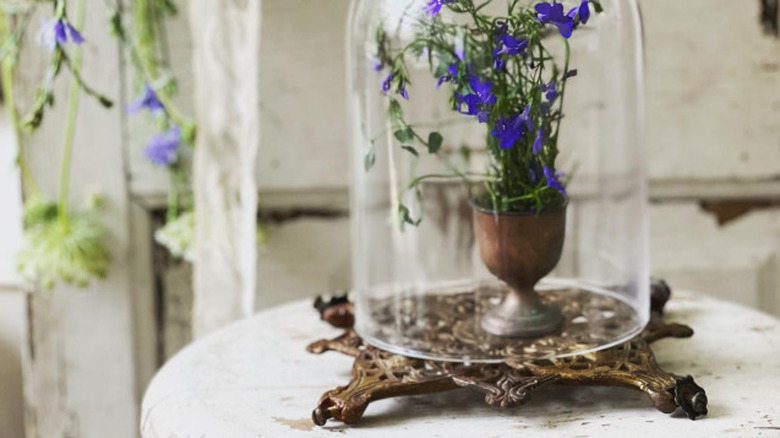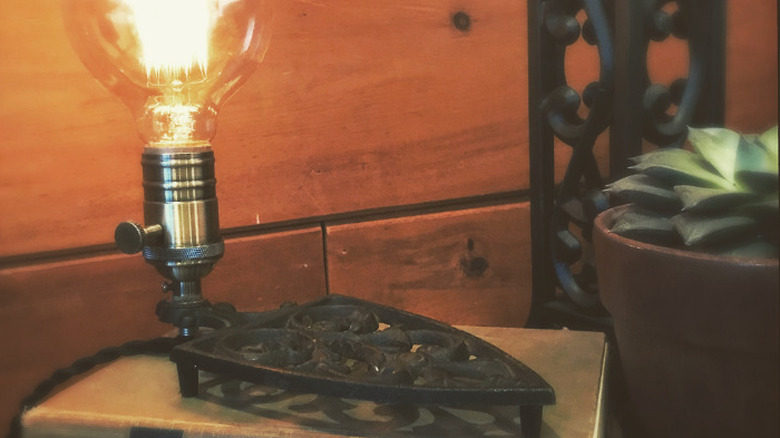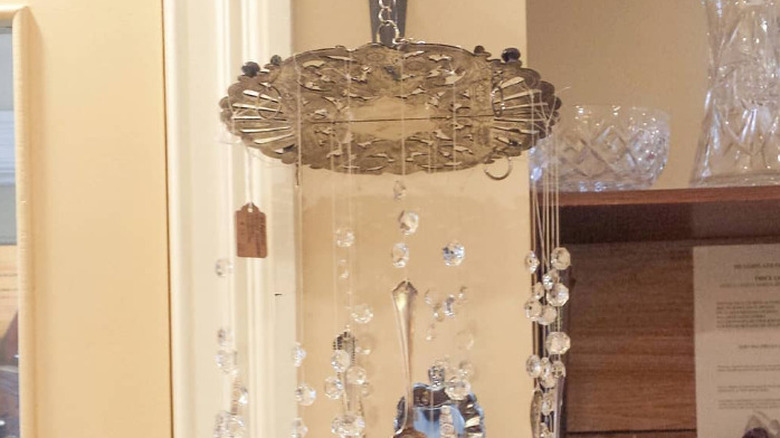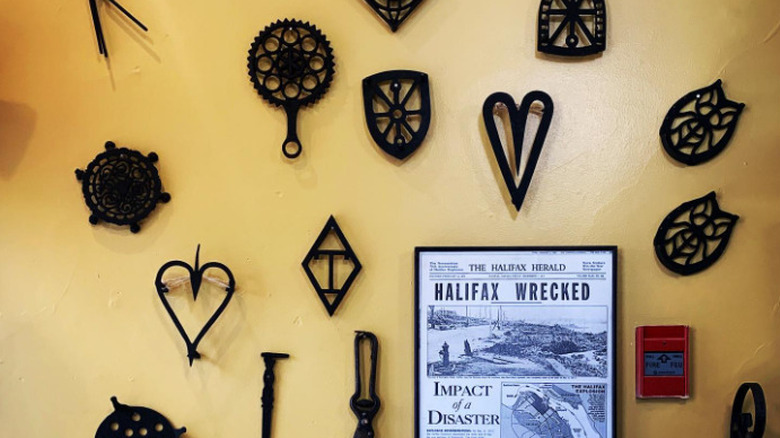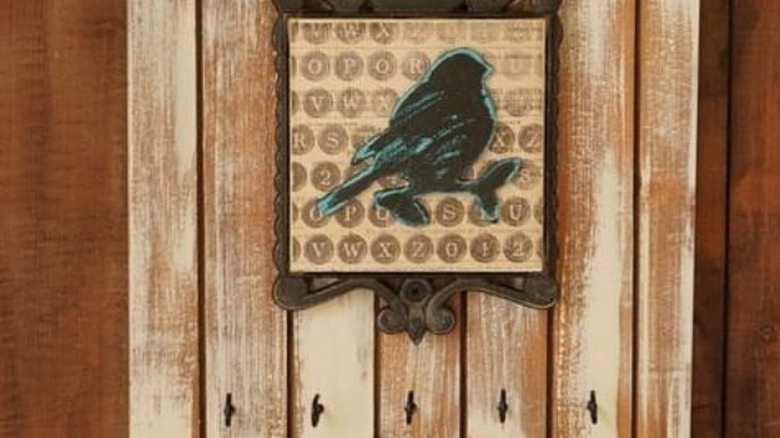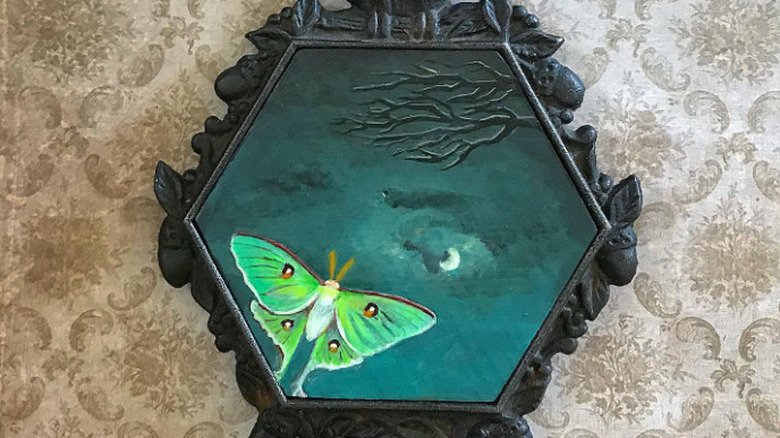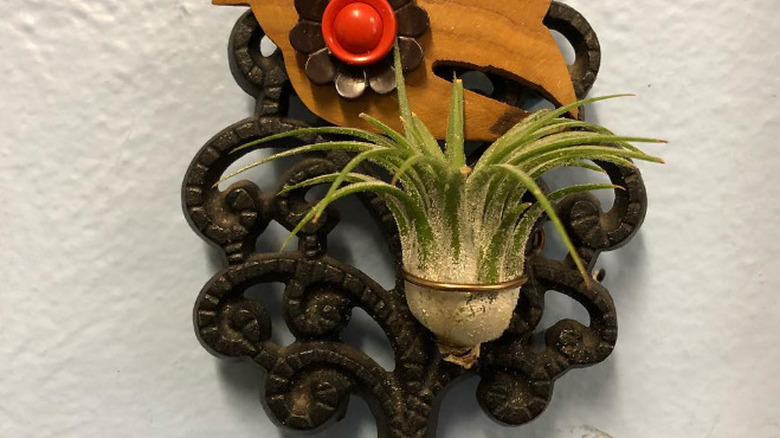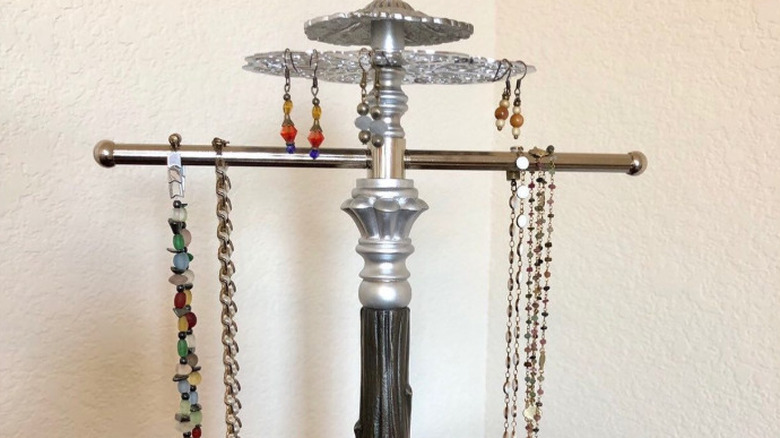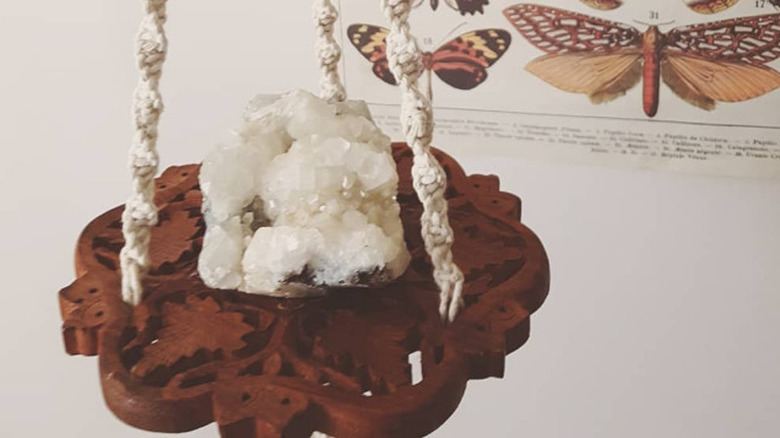14 Ways To Repurpose A Vintage Trivet Around Your Home & Garden
We may receive a commission on purchases made from links.
Trivets have been necessary items in kitchens for thousands of years and have even popped up at prehistoric sites as an implement used to elevate food above the fire when cooking. While cooking over a flame has become more of a special occasion treat since electricity found its way into homes — s'mores, anyone? — these little metal or tile implements have found a new purpose as a way to elevate hot pots and pans off of more delicate surfaces. Thanks to how long they've been around and just how commonly they were used, it's fairly easy to find them at antique or thrift stores, but it's safe to say that they're not as necessary as they once were. Because of this, many people find themselves with a collection of beautiful vintage trivets that they don't have much of a use for.
If you find yourself in this situation, however, you're in luck. Thanks to their unique design and sturdy construction, there are plenty of different ways to repurpose trivets around your home. Most styles are made of cast iron or ceramic materials, incorporate a handle or easy slots for hanging, and feature some kind of decorative design. Whether you want to turn them into some antique-inspired wall art, spruce up your plant setup, or upgrade your storage and organization, you're sure to find another use for your trivets that have been sitting around and collecting dust.
Protect your table from candles
If you don't cook often or prefer to plate up meals while your pot is still on the stove, a trivet might seem like a useless item to have on hand. There is, however, another common item that your surfaces could benefit from a bit of protection from. Jar candles are safe to burn directly on level surfaces, but if you're anxious about the heat or want to make things feel more stable, place a trivet underneath. Even if you don't need a buffer, a trivet is a great way to upgrade your candle display.
Pair it with a cloche
Cloches are a great way to add some interest to your home decor and create an intentional-looking centerpiece out of a simple item, but if you want to take things one step further, consider using a vintage trivet as a base. This DIY doesn't require any alterations — just place your trivet on the table, add the item you want to display on top, and cover it with the cloche — so it's perfect if you want to have the flexibility to reuse your trivet in another project or for its intended purpose down the line.
Light up your home
If you're willing to get creative, you can use thrifted items for a DIY lamp that's designer-worthy. Items like vases and bowls are common picks, but you can use unexpected finds, like a vintage trivet, too. You'll just need something like this Lamp Making Kit, a bulb, and a trivet that has a hole wide enough to weave your wire through. Many vintage trivets have a handle with a hole to easily mount them on the wall when they're not in use, so sourcing one that fits the bill shouldn't be much of a challenge.
Display it as wall decor
If you have a vintage trivet that's beautiful but isn't getting much use in your home, consider turning it into a piece of wall art. Many trivets made after the mid-1700s were designed to be mounted by the fire for easy access and storage, so they already have convenient holes intended for hanging. If you find yourself with a smaller trivet with legs and no obvious hanging point, however, don't worry. It should be simple to drive a nail through one or more of the open spots in the pattern to securely mount it.
Build a wind chime
Want to repurpose some old silverware and a trivet in one DIY? Try your hand at making a wind chime. This is very simple to do yourself, especially if you're working with a vintage trivet that already has a pattern with cutouts. Simply drill some small holes in the end of your silverware, attach either some fishing wire or a thin chain to them, and link them to your trivet. Add another piece of chain on top for easy hanging, and you're set. You can also string beads along the wire for an added dose of glitz.
DIY a creative gallery wall
If you have a collection of trivets that are too small or simple to make much impact as wall art when hung individually, consider grouping them together to create a full display.
doesn't just have to include art, and adding in other decorative items like trivets can help to break up the monotony of similarly shaped frames. This DIY is perfect to fill an awkward wall in a kitchen or by the fireplace, but it can find a home just about anywhere you need an extra dose of texture and interest.
Craft a key holder
With the help of a trivet, a knob, scrap wood, and some hooks, you can create a stylish wooden key holder anyone can DIY. Create a base out of your wood panels, add hooks along the bottom, and mount the trivet on the wood with the repurposed knob to accessorize. If you want to forgo the wood entirely and create a smaller key holder, you could also attach the hooks directly to your trivet with some glue and use the hole along the top intended for hanging to mount it on the wall in your entryway.
Turn it into a magnetic display board
Most vintage trivets are made of metal because of their durability and heat resistance, so if you're lucky enough to have one that's made of cast iron or steel, it comes with the added benefit of being magnetic. Because of this, you can use it as a convenient spot to display photos, store to-do lists, or keep business cards. If you want to replicate this DIY, look for a trivet that's flat or has a simple design. Too much open space in the filigree will make it difficult to find spots for magnets.
Frame your handmade art
Many vintage trivets are designed with a tile in the middle that's surrounded by a heavy-duty cast iron frame. If you're looking to repurpose one of these pieces and you have a knack for art, you're in luck. The center tile can be removed and either painted over or replaced with a canvas or piece of material of the same size. Once you paint your artwork and put it back in, you'll be left with a unique, ornate framed piece that's incredibly easy to hang thanks to the handle that's already included in the trivet's design.
Build spooky decor
The intricate, wrought iron patterns on vintage trivets are often reminiscent of a time long past. While there are plenty of ways to style them that give them a more modern or rustic spin, you can also take advantage of their old-timey look and turn them into spooky decor. This is the perfect DIY for the Halloween season, but it can also present an opportunity to create year-round decor for those who love a gothic touch. The process is simple — just remove the tile from your trivet and replace it with a spiderweb decoration.
Create a holder for an air plant
Caring for your air plants is incredibly easy — so much so that one of the hardest parts of having them is figuring out how to display them. Because they don't need to be buried in soil, there are tons of different possibilities. This DIY, for example, only requires you to have a vintage trivet and some wire. Cut a piece of wire that's large enough to wrap around your air plant, then loop it through the holes on the trivet to secure it. Place your air plant in and viola! A stylish wall hanging plant holder.
Display your favorite jewelry
If you have some additional metal pieces that you're looking to repurpose in addition to your trivet, like a lamp base, consider making a DIY jewelry holder. A thin brass trivet is perfect for this, as the small holes created by the filigree are the perfect spot to hook on earrings. Secure it to a lamp base for some height, then add a simple metal crossbar to help organize your necklaces. For an even simpler twist on this DIY, you can also hang a thin vintage trivet on the wall and use it for earring storage.
Elevate your houseplants
Plant stands are a stylish accent, and they're incredibly simple in design, so there are plenty of items you can repurpose to make your own indoor plant stand. Vintage trivets are one of the best. They're already designed to be sturdy, level, and resistant to moisture, and many styles already feature legs to elevate them off of your surfaces. If you have one that sits low, however, you can add on legs to give it an extra boost and help to increase the airflow under your potted plants.
Craft an easy hanging shelf
Hanging shelves are very simple to construct yourself, and if you have an ornate trivet and some macrame cord, you can DIY one in a matter of minutes. Take advantage of the intricate cutouts found in most vintage metal or wood trivets and use them as spots to weave through your cord. You can keep it super simple — just weave three pieces of cord through the holes and tie the top and bottom in a sturdy knot before hanging — or try out more complex macrame techniques to give your cords some additional texture and strength.
